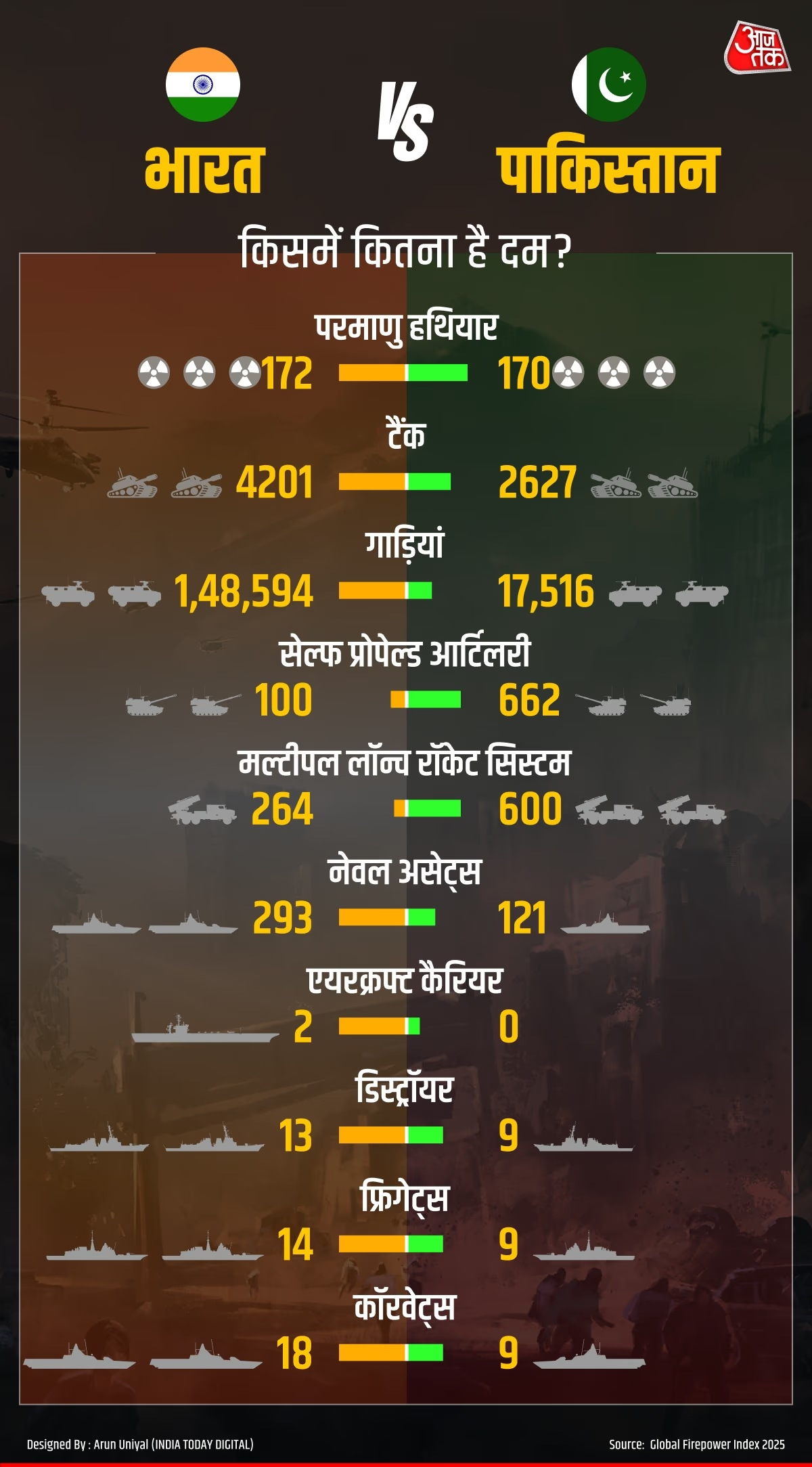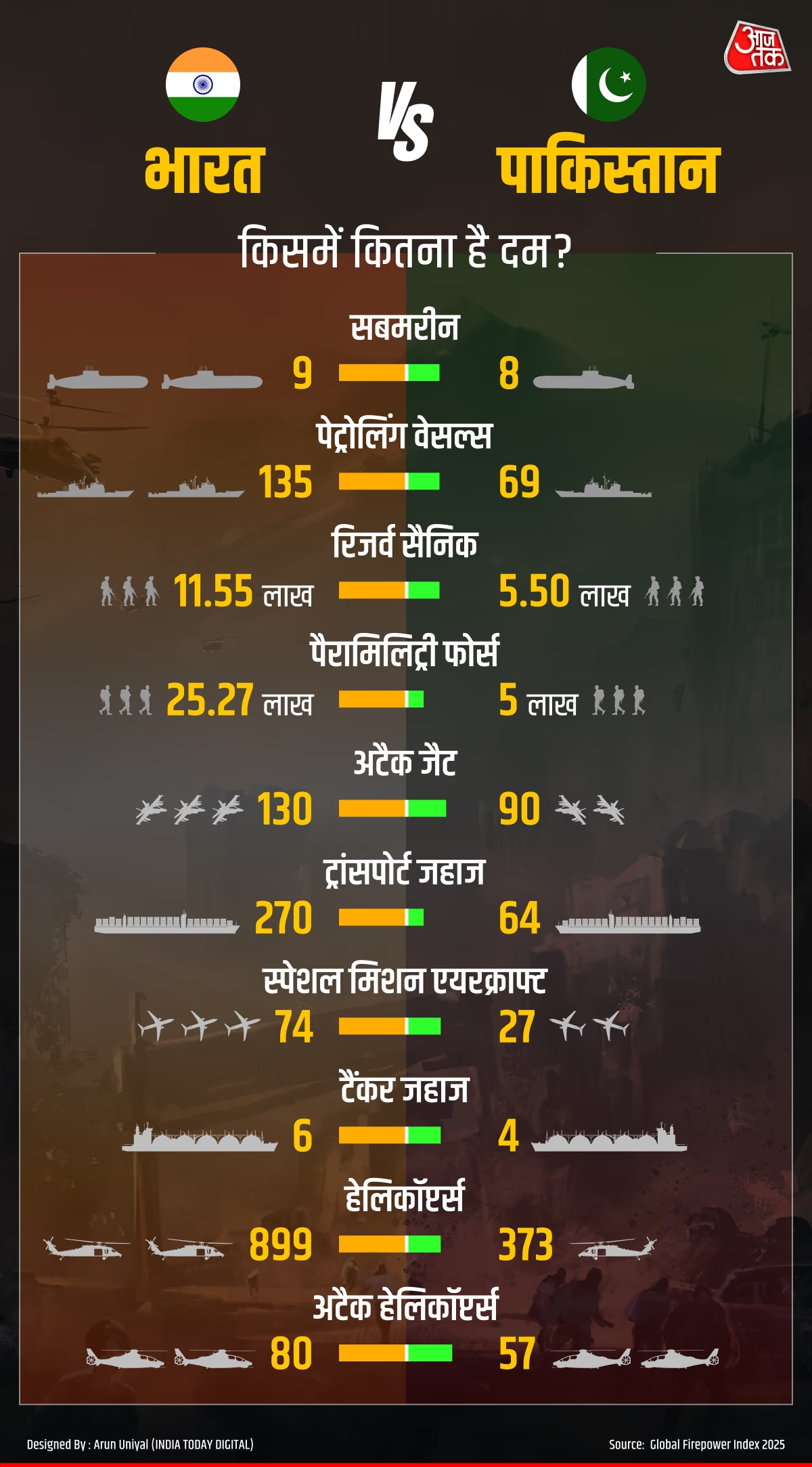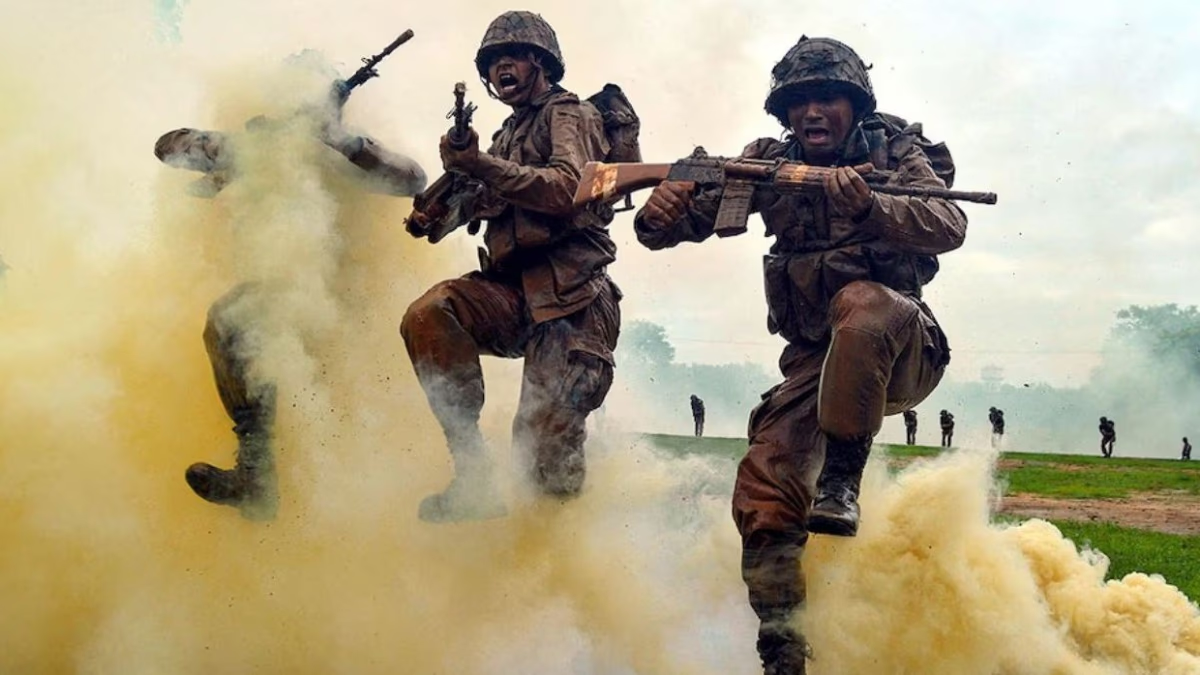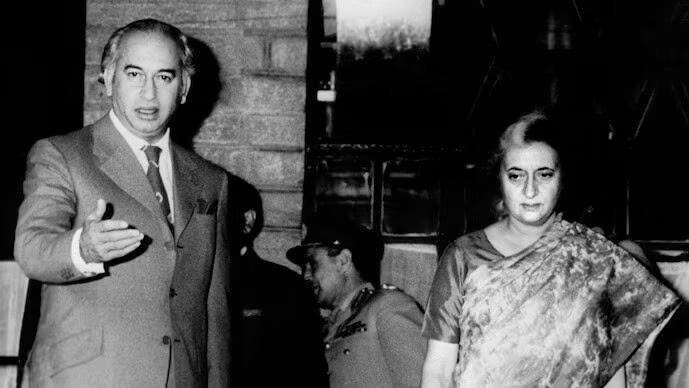The terrorist attack that occurred on Tuesday in Pahalgam, Jammu and Kashmir, claimed the lives of 26 individuals. The attackers targeted tourists on vacation in Kashmir, resulting in national outrage and calls for decisive action against Pakistan-sponsored terrorism. In response, the Indian government has taken stringent measures, including suspending the six-decade-old Indus Water Treaty, and has ordered Pakistan's diplomats to return home.
India Dominates in Every Sphere Over Pakistan
Pakistan lacks the capacity to compete with India in any domain, often targeting defenseless civilians through terrorism. Since independence, Pakistan has engaged in three wars with India—in 1965, 1971, and 1999—and each time, the Indian military has outperformed. Additionally, with surgical strikes and airstrikes on terror bases in Pakistan, Indian commandos have showcased exceptional valor.
Following the Pahalgam attack, tensions between India and Pakistan have soared once again. Knowing the extent of military strength each possesses is vital. As per the Stockholm International Peace Research Institute's (SIPRI) recent report, India holds 172 nuclear weapons, while Pakistan holds 170. All of India's nuclear arsenal is in storage, with none deployed.

Source: aajtak
The Potency of Indian Missiles
Pakistan possesses short-range missiles like Nasr, Hatf, Ghaznavi, and Abdali, with ranges from 60 to 320 km. Medium-range missiles such as Ghauri and Shaheen have ranges from 900 to 2,700 km, potentially targeting Delhi, Jaipur, Ahmedabad, Mumbai, Pune, Bhopal, Nagpur, and Lucknow.
On the other hand, India has the short-range Prithvi missile, covering 350 km. Agni-I has a range of 700 km, Agni-II targets up to 2,000 km, and Agni-III spans 3,000 km. Agni-V ranges from 5,000 to 7,500 km, capable of targeting any city in Pakistan.

Source: aajtak
The Indian Army: Seemingly Indomitable
When comparing armies, India significantly surpasses Pakistan. India has 1,455,550 active soldiers, compared to Pakistan's 654,000. India also maintains 1,155,000 reserve soldiers, whereas Pakistan has 550,000. In paramilitary forces, India has 2,527,000 personnel compared to Pakistan's 500,000. According to the Global Firepower's 2025 report, Pakistan has over 2,500 tanks, while India boasts over 4,000.
Considering air forces, Pakistan operates JF-17 Thunder, F-16, and Mirage fighter jets. Its navy includes Agosta 90B submarines, Tariq-class destroyers, and Zulfiquar-class frigates as advanced maritime assets. The Indian Army features Arjun tanks, Bhim tanks, howitzers, and the Pinaka rocket system, complemented by the supersonic BrahMos missile enhancing air force capabilities.
The Indian Air Force comprises 2,229 aircraft, including 600 fighter jets, 899 helicopters, and 831 support craft. Prominent fighter jets are Rafale, Su-30MKI, and surveillance aircraft Netra, alongside missile systems like Rudram, Astra, Nirbhay, BrahMos, and the Akash defense system.
India's military capacity has continued to strengthen, ranking fourth in the Global Firepower Index. Equipped with advanced military instruments and modern weapons, India's strategic positioning enhances its military prowess. Meanwhile, Pakistan, which ranked ninth in the 2024 index, has slipped to twelfth in 2025, reflecting challenges in defense modernization and diminishing military stature.




